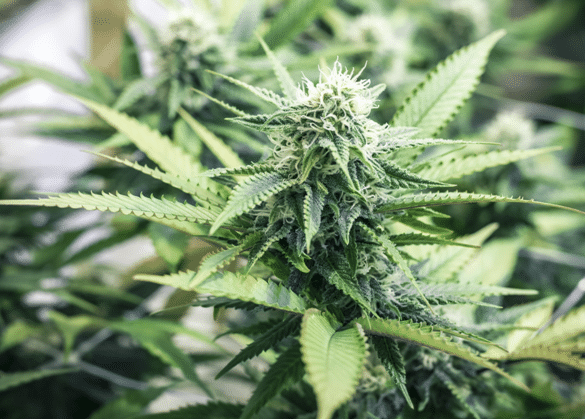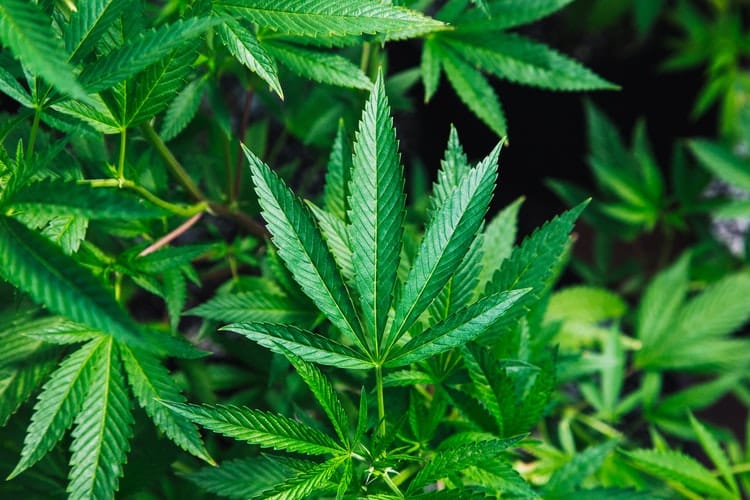What Are Photocannabinoids?
Cannabis contains more than 400 chemical elements, and over 60 of these are cannabinoid.1Phytocannabinoids are the naturally occurring cannabinoids synthesized in a plant. Common phytocannabinoids include CBD (cannabidiol), CBG (cannabigerol), and THC (tetrahydrocannabinol). These molecules are formed from the decarboxylation of their acidic counterparts, CBDA, CBGA, and THCA.
After Dr. Raphael Mechoulam discovered the endocannabinoid system in 1992, extensive study of cannabinoids and their interaction with the aptly named CB1 and CB2 receptors began. CB1 and CB2 receptors are categorized by where they are located in the body. TRPV1 is another, the more obscure receptor that’s not often mentioned. It modulates body temperatures and sensations of extreme heat and pain.
This biochemical control system is critical to the healthy human body as it regulates many biological functions. The CB1 and CB2 receptors are located throughout organs in the body, the nervous system, and immune system. Cannabinoids can inhibit or stimulate these receptors triggering a chain of events that changes the cell’s signals, activity, or gene regulation.
Scientists continue to research the role that phytocannabinoids play in treating neurological diseases that have few or no remedies. The term endocannabinoid deficiency is a concept used to describe the pathophysiology of diseases such as irritable bowel syndrome, migraines, fibromyalgia, and more.2
How Phytocannabinoids Relate to Endocannabinoids
Phytocannabinoids react with the same receptors as endocannabinoids. There are concentrations of them in the resin produced in the trichomes of the cannabis plant. The specific chemovar and growing process directly affect the amount of resin and cannabinoid content in the plant. Cannabis is unique in that many of the cannabinoids it contains have verified and recorded medicinal properties through studies, research, and indigenous knowledge.
Endogenous cannabinoids are lipid neurotransmitters that interact with the body’s receptors. One of the reasons that they are similar to phytocannabinoids is that they dissolve in non-polar, natural solvents, fat, and alcohol.
Research has shown that fatty acids and membrane lipids play an integral role in transmitting nerve signals. Phytocannabinoids counteract or mimic some endocannabinoid effects, providing essential therapeutic benefits because “they help re-establish a homeostasis that has been disrupted by genetics or lifestyle.” As a result, the scientific community is beginning to bear witness to how essential phytocannabinoids are, as they relate to the endocannabinoid system.
CB1-Receptor
CB1 receptors play a vital part in sensory perceptions, coordinating movements, spatial orientation, motivation, and cognitive functioning. Found in the brain, glands, gonads, hippocampus, cerebellum, and other organs, its primary function is reducing inadequate or overactive signaling of neurotransmitters located in the brain. CB1 balances the neurotransmitters’ activity when they’re activated. Cannabinoids that bind to this receptor help reduce pain, nausea, seizures, and other symptoms.
CB2-Receptor
CB2 receptors associate mostly with the immune system but also organs like the liver, heart, bones, and reproductive organs. Recent research has now illustrated that this receptor is also vital to process signals in the brain.3Evidence shows that this receptor may diminish the impact of neuroinflammatory and inflammatory diseases on the body.
Photo by Rick Proctor on Unsplash
References
- Atakan, Zerrin.“Cannabis, a complex plant: different compounds and different effects on individuals”,Ther Adv Psychopharmacol2012, 2(6):241-254. DOI: 10.1177/2045125312457586
- Russo, EB.“Clinical endocannabinoid deficiency (CECD): can this concept explain therapeutic benefits of a cannabis migraine, fibromyalgia, irritable bowel syndrome and other treatment-resistant conditions?”Nero Endocrinol Lett 2008, 29(2):192-200.
- Quraishi and Paladini. “A Central Move for CB2 Receptors”,Neuron 2016, 90(4):670-671. DOI: 10.1016/j.neuron.2016.05.012












